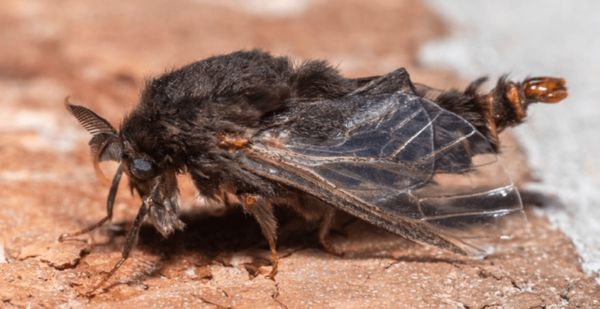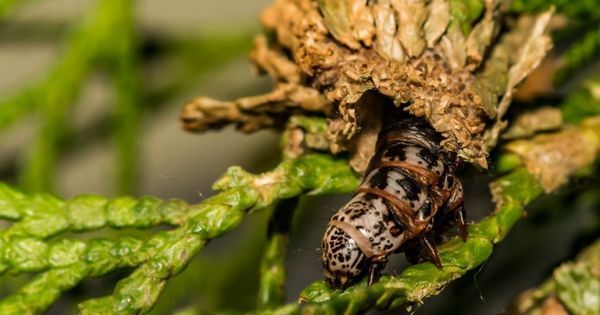Have you ever noticed the lovely pine needles on your cherished evergreen trees becoming sparse? It’s possible that you have come across an Evergreen Bagworm infestation. Although they have the term “slything creatures,” these are actually young moths. They can seriously harm your priceless trees and possibly cause them to die if left untreated. But don’t worry—we’ve got you covered with a few simple methods to keep these tiny miscreants away from your trees!
Knowing the Evergreen Bagworm, the Silent Killer
The Evergreen Bagworm is a real pain in the world of pests that endanger the well-being and aesthetic appeal of trees. These tiny, barely noticeable organisms are members of the Psychidae moth family. Their distinctive self-defense mechanism, a bag or case constructed from plant waste such as leaves, twigs, and bark, gives them their name. The bagworm larvae are skillfully disguised by these sacks, which are suspended from tree branches.
The Evergreen Bagworm’s Secret Life
The moth species known as Thyridopteryx ephemeraeformis, formally termed the Evergreen Bagworm, is capable of causing extensive damage to both deciduous and evergreen plants. They may resemble little bags dangling from tree branches due to their concealing appearance and ability to function as portable shelters. But don’t fall for it! These tiny troublemakers are not worms at all, but rather larval moths.
An Early Look at Their Life Cycle
It’s essential to comprehend the life cycle of Evergreen Bagworms in order to handle an infestation successfully. The mature female lays her eggs within the sack she makes for herself and hangs from a tree. These eggs hatch into small larvae that leave the bag in search of a suitable host tree in late spring or early summer. They begin weaving their bags using silk that is generated by unique glands within their bodies, adding more plant matter bit by bit. With time, these bags become more obvious.
The larvae persist in their growth and molting process, sometimes surfacing to restock their bags. They enter their last stage, referred to as the instar, as summer draws to an end. They are prepared to change within their protected enclosure after around six weeks. The pupae develop inside the bagworm casings, undetectable. The adult moths appear after about two weeks, puncturing a circle in the case to let them out. Male moths, which are smaller, darker, and have more distinct wings than females, take off in search of mates, while the wingless females remain near their natal tree.
The Evergreen Bagworm’s Destructive Nature
Evergreen Bagworms can cause significant damage to trees if they are not managed, despite their first innocent appearance. These voracious feeders conceal themselves inside their bags and feast on foliage, making it challenging to identify an infestation until it gets out of control. Defoliation caused by their feeding activities makes it more difficult for trees to photosynthesize and generate the nutrients they require to live and thrive. Moreover, the tree becomes weaker as a result of their feeding, leaving it more susceptible to pests, diseases, and environmental stresses. These cunning bagworms can lead to tree deterioration and possibly death if treatment is not received.

Successful Management Techniques
It is crucial to handle Evergreen Bagworm infestations quickly and effectively in order to reduce the harm they do. The following are some methods and strategies to think about:
1. Keep trees in good health
When it comes to Evergreen Bagworms, therapy is never better than prevention. You can reduce the likelihood of infestation and enhance the general health of your trees by implementing these practices:
Check your trees frequently for evidence of bagworm infestation, such as sacks dangling from branches.
Before the larvae have an opportunity to emerge and proliferate, prune and remove any sacks you see.
By include a range of tree species in your environment, you may promote biodiversity. By doing this, you can prevent bagworm infestations in your trees.
The Final Word

